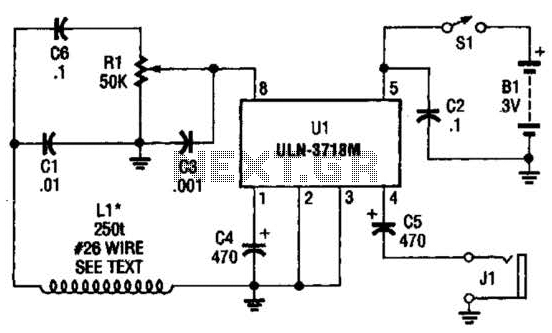

The latitudinal zone where the loudest whistlers are heard falls roughly between 30-55 degrees north for North American listeners. Whistlers of intense strength can sometimes be heard across the middle and southern-most United States and southern Europe and North Africa. from eBay listing): The WR-3 requires at least a 1 to 2 meter long (39 inches) telescoping whip that has a very-commonly-available MALE-BNC base connector (36 to 66 inches) for excellent sensitivity) and quality 8 or 16-ohm headphones with a 3.5 mm / 1/8-inch mini-stereo plug (very common), and you're good to go! It will not work with a loop antenna because a loop is very low-impedance - it operates strictly and optimally with a 1-meter long or longer (40 inches-plus) telescoping whip or vertical wire antenna/aerial (use no coax or only a short 2) and can take on incredibly beautiful sounds. Regarding the Diamond Rh205, it is best to obtain the shiny chrome-plated (metal) version rather than the cheaper black "Japanese knock-off" version. Also, the excellent Diamond RH205 VHF/2-meter 5/8 wave antenns is also great and very similar to the Super Stick II. Any of the four available from Smiley Antenna are great.

Examples of excellent telescoping-whip antennas to use with the WR-3 is the Smiley Antenna "Super Stick II" for 2-meter and/or the aero-band. The optimal length of the whip-antenna should be between 1 meter (!39 inches) to 2 meters (~78 inches) in length. ANTENNA: It requires and functions optimally with a vertical-antenna (telescoping-whip type with a base BNC-mount/connector) to receive VLF signals and requires stereo-mini headphones to be plugged into its output for listening. Welcome to the realm of extreme and very-low-frequency (ELF/VLF) "Natural Radio!" The WR-3 is an electric-field ("E-field") type of "whistler receiver" specifically designed to monitor naturally-occurring VLF radio emissions of Earth that occur in the 300-11,000 cycles-per-second (0.3-11 kHz) audio-frequency ELF/VLF radio spectrum. Sferics | Tweeks | Whistlers | Dawn/Auroral Chorus | Space-Weather Prediction Websites | Best Times to Listen | Russian Alpha Radionavigation Signals | Finding Listening Sites | Insect Wing Noises | About Headphones and Speakers for the WR-3 | Recording with the WR-3/ | Receiver Specifications | Quick Tips | ANTENNA
VLF RECEIVER SENSITIVITY PLUS
One or two series 47 K resistors(s) plus a parallel termination-resistor of 1K suffices fine for interfacing the WR-3 joint 3.5mm audio-output jack (headphone level audio) of the WR-3 to the mic-level input of PCs and phones so you may employ their recording apps! (Stephen P. the lowest conductor closest to the "holder" of the plug (3.5 mm type/4-conductor) is the mic-level connection).
VLF RECEIVER SENSITIVITY HOW TO
about how to interface the WR-3 output jack to the newer PC/phone 4-conductor jacks that combine stereo audio outputs with a monoural mic-level input (i.e. Information for recording using Sony Mini-Disc (MD) recorders and memory-chip-recorders (like my Zoom H2 employing an SD-card) has been added to the Recording section. This WR-3 Receiver booklet/guide is also highly useful for all Natural Radio listeners due to its interesting information pertaining to Natural VLF Radio that I have been compiling since 1991. This WR-3 Listening Guide was first begun in mid-1991 and updated as of THE POCKET-PORTABLE WR-3 NATURAL-VLF-RADIO PHENOMENA RECEIVER

WR-3 VLF Receiver Listening Guide / Natural VLF Radio Listening Guide


 0 kommentar(er)
0 kommentar(er)
